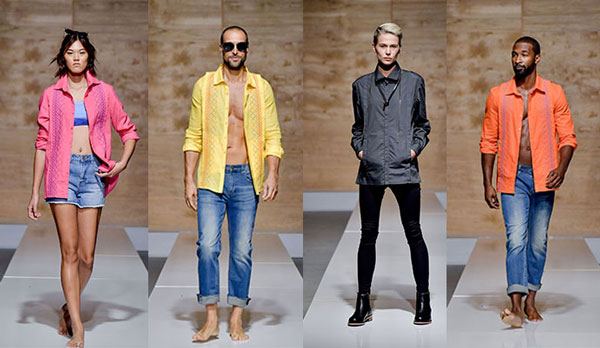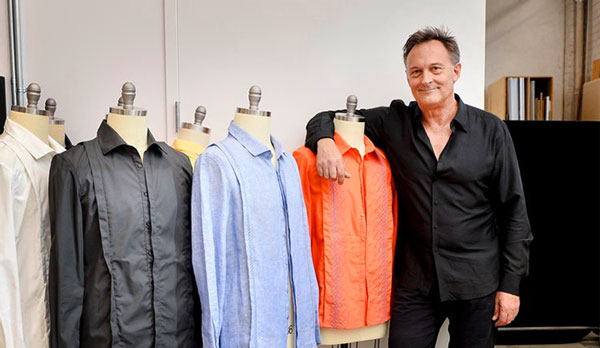Mark Rios thinks about fashion when he is driving, and when he’s in the shower. The founding partner of the architecture firm Rios Clementi Hale Studios works on his vision while juggling several real estate projects he’s designing — from The Row, a massive open-air retail and office project near the Arts District, to the transformation of a 12-acre airport in Santa Monica into a public park.
Rios’ first fashion line, “Guillermo,” is a stark departure from a stereotypical architect’s wardrobe. No black jeans, no black sweaters, and strictly no turtlenecks. The tie-in to Rios’ other work lies more in the architecture of the clothing itself — how its form can suit its function.
The Real Deal spoke to Rios about straddling the worlds of architecture and fashion design, and his decision to move the Rios Clementi studio from Larchmont to a football-field-sized bow truss building in Leimert Park, right near the Crenshaw Station stop on the Expo line.

Mark Rios’ fashion line (Credit: Rios Clementi Hale Studios)
What’s the story behind this line?
My dad [Guillermo Rios, a surgeon raised by rancheros] is from Mexico so he wore guayabera shirts, the polo shirt of Mexico. The shirt was for workers in the fields to carry fruit but they could continue to wear it later to go to weddings. Like architecture, it transforms in use. So I wanted to design a shirt like that but for contemporary needs.
How did the design come together?
The seamstress was making mockups and changing the pattern and we went through about 15 iterations of where the pockets lay. There are similarities in designing the garments and designing a building. I can’t be set on my first idea — the idea evolves.
What’s been the craziest part of the process?
Sometimes what we don’t know can be good because you have this freedom to try — we are not entrenched in the fashion history of what you can and can’t do and what sells and what doesn’t sell. There are some really intense colors, orange and fuschia. The colors range from calm to joyous.
Your architectural projects also range from very minimalist to very colorful…
Yes. I want our work to be really affirmative and joyous. It is the opposite of condescending. A lot of architects, their work is depressing and mean. I want our public plazas and buildings to be positive and make people stop for a minute. We don’t want to be too esoteric. You don’t have to be an intellectual to get it.
What real estate trends are you seeing that some of our readers might not know about?
People are looking farther out. We just moved [Rios Clementi Hale Studios] to the Crenshaw area and the quality of the housing stock and cultural diversity is really fantastic. As L.A. becomes more dense, people are exploring more options near transit. If you look at the Expo line, Santa Monica is expensive and Culver City is [getting there]. Crenshaw is most rapidly changing because it is at the intersection of [the train to] LAX so it is a crossroads of the city. It has amazing architectural context and trees. The view from the Crenshaw hills is more beautiful — it’s like being in Hong Kong. It is better to be outside of the city looking at the city.
How do you approach being new to an area that is changing?
We are trying to be observant and quiet and watch and get to know the neighborhood and learn its history.
What do you loathe most about L.A. architecture?
Buildings without ideas. I don’t care if I like the idea, just that it has one — a voice, something to contribute. It is so depressing to drive down a street and see banal buildings. It doesn’t cost more to have ideas.
